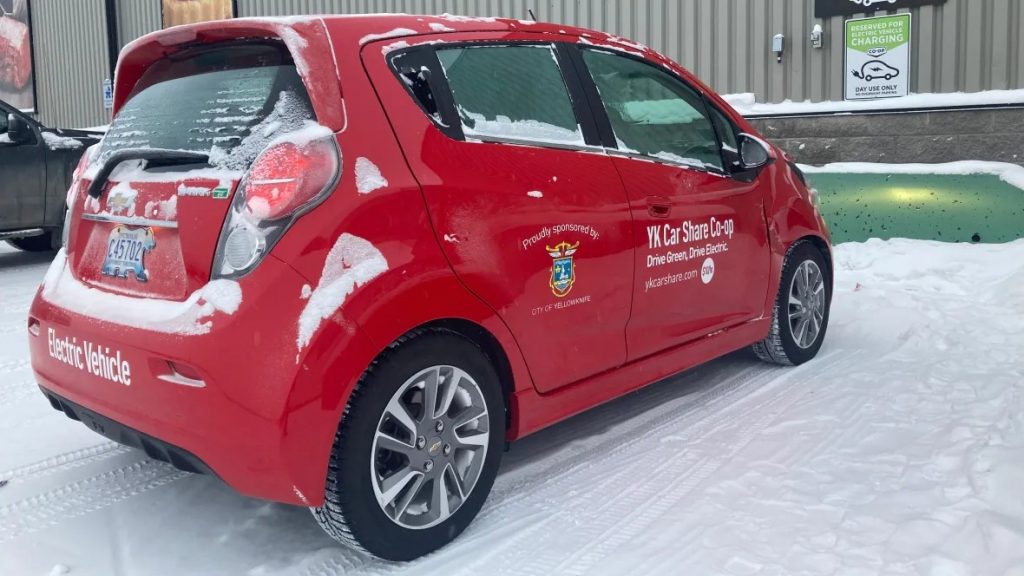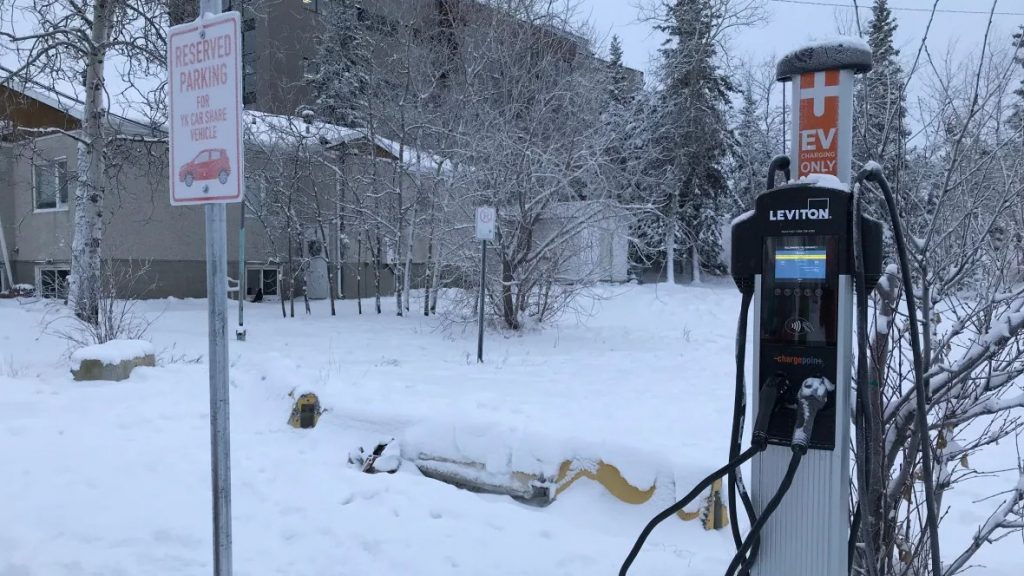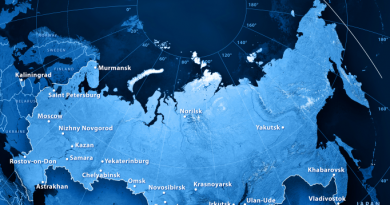Electric vehicles in Canada’s North start reliably in cold, but long-distance “range anxiety” is real

Extreme cold might reduce how far her electric vehicle can drive on a single charge by 40 per cent, but that isn’t a deal-breaker for Hay River, N.W.T. resident Patricia Wray.
“We got it because we knew we weren’t going to travel south in it,” she explained, describing her and her husband’s Tesla Model 3 standard range vehicle as an exclusively “in town” car.
The vehicle has a range of about 250 kilometres when it’s 90 per cent charged, and Wray said it doesn’t automatically calculate for the cold — she keeps an eye on it herself, and watches as the range disappears more quickly in frigid temperatures.
But she doesn’t consider it to be a problem.
The Wrays have a level 2 charger at home and at work, and the furthest they drive to run an errand is only about 30 kilometres both ways. Unlike gas vehicles, Wray said she can also rely on the Tesla to start when it’s -40 C.
“We have a couple older gas cars and twice last winter, even though they were plugged in … we couldn’t get them started. We’ve never, in the two and a half years we’ve had the Tesla, ever had it not start if it was plugged in.”
Wray’s son-in-law, James Locke, currently lives in Los Angeles, but brought a Tesla to Hay River when he lived in the town back in 2016. After moving to B.C., he would drive the vehicle North to visit his in-laws.
Locke said Teslas lose about 30 per cent of their range in the cold, and only lose 40 per cent in extreme “worst-case-scenario” cold. That’s because the battery has to “compensate” to keep itself — and the cabin — warm with electric heat, he said.
When you consider that Teslas have ranges from between 300 to more than 600 kilometres, Locke said the cold-weather range loss is “not a factor” for the average commute.

‘It’s plenty, plenty fine’
In Yellowknife, there is a small candy apple red electric car that zips around the city’s streets — noticeable because of the words “YK Car Share Co-op” emblazoned on its sides.
The car share co-op was founded back in 2017, and it purchased a 2016 Chevrolet Spark in January 2020 through a partnership with the City of Yellowknife. Its members pay a fee up front to join the co-operative, and then pay either $10 or $12 per hour to use the car on evenings, weekends and holidays.
France Benoit, vice-president of the YK Car Share Co-op, said the vehicle — affectionately named Sparky — has about 40 drivers in total, including city employees who have exclusive access to the vehicle during the work day.
“For our needs in Yellowknife, it’s plenty, plenty fine,” said Benoit.
The car’s range is considerably less than Wray’s Tesla, however, with the capacity to drive 120 kilometres in the summer months and between 50 to 60 kilometres in the winter months.
“If you have 40 to 50 kilometres in usage before you need to go charge the vehicle, that’s four or five times the airport loop,” she pointed out. “It’s about planning your trip, running your errands in sequence, so for me — it isn’t an issue.”
Benoit said she feels comfortable taking the car on the Ingraham Trail during the summer, but doesn’t risk it in the winter months, choosing instead to rent a gas vehicle for those journeys.
The car share works for her, she said, in part because she doesn’t have children and because she lives downtown, close to the Spark’s level 2 charging station near Yellowknife City Hall. For her, it was also “part of a larger environmental plan.”
The transportation sector is one of the biggest sources of greenhouse gases in the N.W.T. The territory has a goal of reducing greenhouse gas emissions from transportation by 10 per cent by 2030.
Range loss comparable to gas vehicles
Andrew Robinson, the car share co-op’s treasurer, said an electric vehicle’s range loss is not unlike a gas vehicle’s range loss in the dead of winter — and it’s something he’s been recording in his diesel Volkswagen.
He said it takes five litres of fuel to travel 100 kilometres in the summer, and 10 litres of fuel to do the same distance in extremely cold weather.
“I’ve been tracking that for probably 10 years,” he added.
Benoit said the co-op is considering blocking out time on the car’s reservation system to give it time to charge, as demand from its drivers starts to outpace its winter range on busy days. The co-op is also looking into getting a second vehicle, she said.
Both Benoit and Wray made note of how little maintenance their respective vehicles have required in the past few years.
“There’s no transmission and big engines that could go wrong,” said Benoit. “I think washer liquid is the only thing you have to put into it,” said Wray, adding that her Tesla is “so maintenance-free, it’s ridiculous.”
A future in N.W.T.?
Benoit sees more potential for electric cars for travel within N.W.T. communities rather than in between them — where infrastructure is still needed to make long-distance drives possible, especially in the winter.
Locke said that kind of infrastructure needs to come first, in order for electric vehicles to be widely adopted in the N.W.T.
“When I talk to friends in the North … they’d love to get [an electric vehicle] but they want to be able to get out of the North with it,” he said, adding that the first time he covered the more than 300 kilometres from High Level to Hay River on a windy, -17 C day was “dicey.”
“I made it, but I used the full range of the car,” he said.
There’s little the territory can do about getting the necessary infrastructure in northern Alberta, he said, but it can install charging stations at intervals heading south from Yellowknife.
According to PlugShare, a website with a map of publicly accessible electric vehicle charging infrastructure, there are six level 2 charging stations in the territory. There’s one at city hall and another at the Arctic Energy Alliance building in Yellowknife, as well as ones at Fort Providence, Lady Evelyn Falls and Queen Elizabeth territorial parks. There’s also a charger at the Wray’s business, KP Woodwright.
“The range anxiety is, I will admit, it will be a bit of a concern until there’s more infrastructure for more people to travel,” said Locke. “The infrastructure should go first, for wide adoption, because then people can feel comfortable getting out of town.”
Related stories from around the North:
Canada: Cold weather, good Korean food and magical lights: Korean flight crew experiences Yellowknife, CBC News
Finland: Cold weather perfect to pioneer electric aviation says Finnair, The Independent Barents Observer
Norway: Arctic Norwegian city gets world’s northernmost electric post truck, The Independent Barents Observer



